All photographs by Nell Farrell while living in San Felipe del Agua, Oaxaca, Mexico. See project statement.
On Palm Sunday, the priest and the statue of Jesus do not lead the procession, they follow. Reenacting Jesus’ arrival to Jerusalem, when the people greeted him as a king and laid coats and branches under the feet of the donkey he rode—stating his intention to arrive in peace—parishioners walk towards the church with their leafy boughs.
Instructions had been to arrive half an hour before Mass, bring your own ramo (bunch or branch) and gather in Calle de Magnolia. Those who joined the procession at the start did bring their own bouquets, providing much diversity and beauty; many were exuberant fistfuls of greenery, variations on what was in season locally. People continued to arrive through the first part of Mass, and those who did not come with their own ramos were given them by the padrinos of the event, who supplied a mountain of small, simple green stalks to any and all.
On Calle de Magnolia, the priest asked the assembled group to line up on both sides of the lane, chiding those who clung to the shady side, suggesting they use the leaves they held as protection from the midday sun. The fragrance was herbal, woodsy. The Father sprinkled holy water up and down the rows and on the donated fronds piled high on a table. The procession began, a last triumph before the somber events to come.
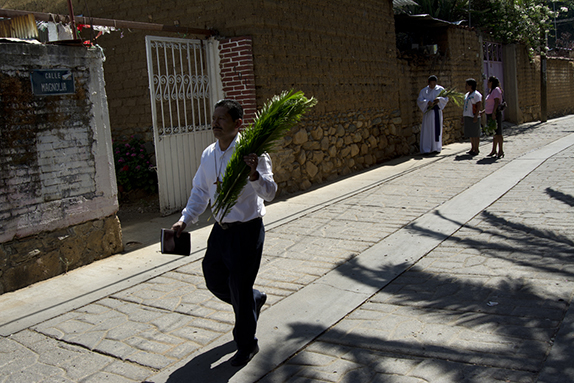
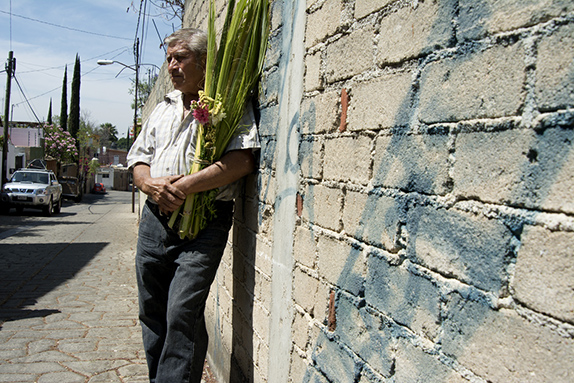
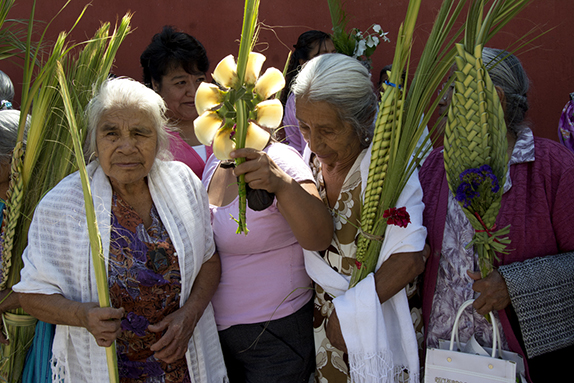
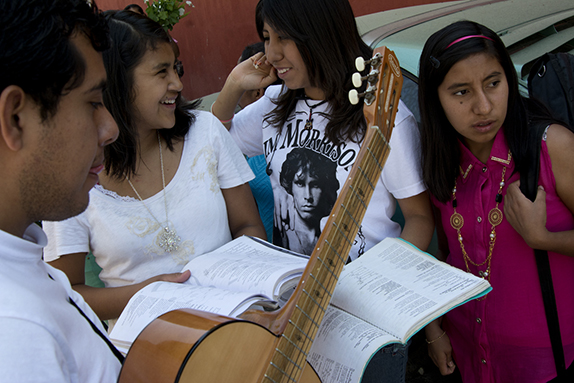

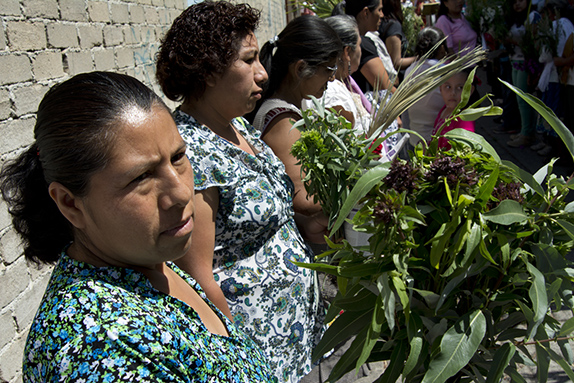

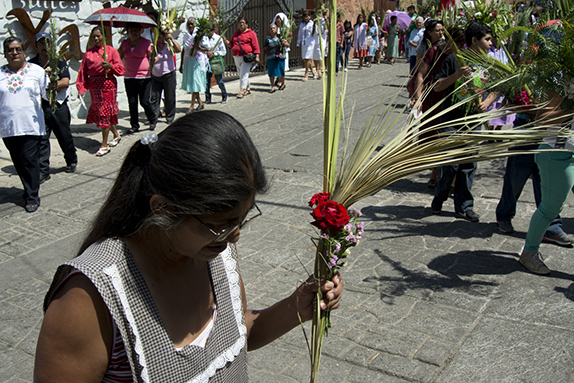
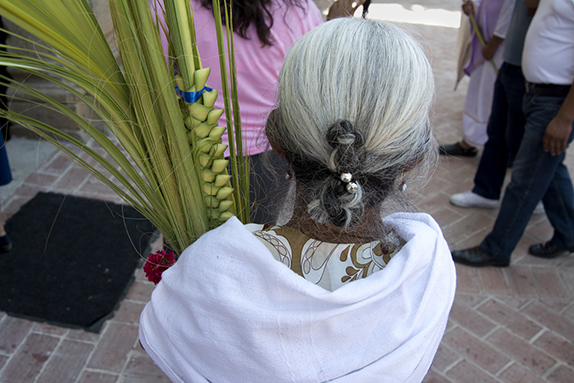
Project Statement: The del agua in “San Felipe del Agua” refers to the fact that a portion of the water from which the colonial Mexican city of Oaxaca lives, flows down from the gem green hills behind what was once a town but now exists as the edge of the larger city: lambs, donkeys, tropical flowers, and a half-hour bus ride to the center of a cosmopolitan metropolis. Those born in San Felipe have a separate set of rights and responsibilities to the community than those who move here. Those who move here tend to bring wealth, and often live behind high walls and drive dark-tinted SUVs.
My family and I lived in Mexico for one year and chose San Felipe because we found a wonderful school there for our children. Having grown up in New Mexico I have always been attracted to Catholic imagery and Guadalupe, growing up atheist I have always been fascinated by faith. And so, in Mexico, I photographed our neighborhood parish.
The photo essays resulting from this study will be published in the New Mexico Mercury from October 2014 through June 2015, roughly once a month on the date corresponding to the event photographed one year previous.


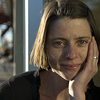

Responses to “Domingo de Ramos”